Tunable Liquid Crystal Based Phase Shifter with a Slot Unit Cell for Reconfigurable Reflectarrays in F-Band
Abstract
Featured Application
Abstract
1. Introduction
2. Design and Simulation
3. Experiments and Discussion
4. Conclusions
Author Contributions
Funding
Conflicts of Interest
References
- Zhao, Y.; Huang, C.; Qing, A.-Y.; Luo, X. A Frequency and Pattern Reconfigurable Antenna Array Based on Liquid Crystal Technology. IEEE Photonics J. 2017, 9, 1–7. [Google Scholar] [CrossRef]
- Bildik, S.; Dieter, S.; Fritzsch, C.; Frei, M.; Fischer, C.; Menzel, W.; Jakoby, R. Reconfigurable liquid crystal reflectarray with extended tunable phase range. In Proceedings of the 2011 41st European Microwave Conference, 10–13 October 2011; pp. 1292–1295. [Google Scholar]
- Doumanis, E.; Goussetis, G.; Dickie, R.; Cahill, R.; Baine, P. Electronically Recon fi gurable Liquid Crystal Based Mm-Wave Polarization Converter. IEEE Trans. Antennas Propag. 2014, 62, 2302–2307. [Google Scholar] [CrossRef]
- Camley, R.; Celinski, Z.; Garbovskiy, Y.; Glushchenko, A. Liquid crystals for signal processing applications in the microwave and millimeter wave frequency ranges. Liq. Cryst. Rev. 2018, 6, 17–52. [Google Scholar] [CrossRef]
- Dahri, M.H.; Jamaluddin, M.H.; Khalily, M.; Abbasi, M.I.; Selvaraju, R.; Kamarudin, M.R. Polarization Diversity and Adaptive Beamsteering for 5G Reflectarrays: A Review. IEEE Access 2018, 6, 19451–19464. [Google Scholar] [CrossRef]
- Qin, P.; Chen, S.; Guo, Y.J. Recent Advances in Reconfigurable Antennas at University of Technology Sydney. J. Commun. Inf. Netw. 2018, 3, 15–20. [Google Scholar] [CrossRef]
- Perez-Palomino, G.; Barba, M.; Encinar, J.A.; Cahill, R.; Dickie, R.; Baine, P.; Bain, M. Design and Demonstration of an Electronically Scanned Reflectarray Antenna at 100 GHz Using Multiresonant Cells Based on Liquid Crystals. IEEE Trans. Antennas Propag. 2015, 63, 3722–3727. [Google Scholar] [CrossRef]
- Jost, M.; Gaebler, A.; Weickhmann, C.; Strunck, S.; Hu, W.; Karabey, O.H.; Jakoby, R. Evolution of Microwave Nematic Liquid Crystal Mixtures and Development of Continuously Tuneable Micro- and Millimetre Wave Components. Mol. Cryst. Liq. Cryst. 2015, 610, 173–186. [Google Scholar] [CrossRef]
- Yang, J.; Cai, C.; Yin, Z.; Xia, T.; Jing, S.; Lu, H.; Deng, G. Reflective liquid crystal terahertz phase shifter with tuning range of over 360°. IET Microw. Antennas Propag. 2018, 12, 1466–1469. [Google Scholar] [CrossRef]
- Hu, W.; Ismail, M.Y.; Cahill, R.; Gamble, H.S.; Dickie, R.; Fusco, V.F.; Linton, D.; Rea, S.P.; Grant, N. Tunable liquid crystal reflectarray patch element. Electron. Lett. 2006, 42, 509–511. [Google Scholar] [CrossRef]
- Perez-Palomino, G.; Encinar, J.A.; Barba, M.; Carrasco, E. Design and evaluation of multi-resonant unit cells based on liquid crystals for reconfigurable reflectarrays. IET Microw. Antennas Propag. 2012, 6, 348–354. [Google Scholar] [CrossRef]
- Bildik, S.; Fritzsch, C.; Moessinger, A.; Jakoby, R. Tunable liquid crystal reflectarray with rectangular elements. In Proceedings of the German Microwave Conference Digest of Papers, Berlin, Germany, 15–17 March 2010; pp. 3–6. [Google Scholar]
- Perez-Palomino, G.; Florencio, R.; Encinar, J.A.; Barba, M.; Dickie, R.; Cahill, R.; Baine, P.; Bain, M.; Boix, R.R. Accurate and efficient modeling to calculate the voltage dependence of liquid crystal-based reflectarray cells. IEEE Trans. Antennas Propag. 2014, 62, 2659–2668. [Google Scholar] [CrossRef]
- Ye, L.; Chen, X.; Cai, G.; Zhu, J.; Liu, N.; Liu, Q. Electrically Tunable Broadband Terahertz Absorption with Hybrid-Patterned Graphene Metasurfaces. Nanomaterials 2018, 8, 562. [Google Scholar] [CrossRef] [PubMed]
- Wang, L.; Ge, S.; Hu, W.; Nakajima, M.; Lu, Y. Graphene-assisted high-efficiency liquid crystal tunable terahertz metamaterial absorber. Opt. Express 2017, 25, 23873. [Google Scholar] [CrossRef] [PubMed]
- Yang, J.; Xia, T.; Jing, S.; Deng, G.; Lu, H.; Fang, Y.; Yin, Z. Electrically Tunable Reflective Terahertz Phase Shifter Based on Liquid Crystal. J. Infrared Millim. Terahertz Waves 2018, 39, 439–446. [Google Scholar] [CrossRef]
- Li, X.; Tan, N.; Pivnenko, M.; Sibik, J.; Zeitler, J.A.; Chu, D. High-birefringence nematic liquid crystal for broadband THz applications. Liq. Cryst. 2016, 43, 955–962. [Google Scholar] [CrossRef]
- Karabey, O.H.; Bildik, S.; Bausch, S.; Strunck, S.; Gaebler, A.; Jakoby, R. Continuously polarization agile antenna by using liquid crystal-based tunable variable delay lines. IEEE Trans. Antennas Propag. 2013, 61, 70–76. [Google Scholar] [CrossRef]
- Pavone, S.C.; Martini, E.; Caminita, F.; Albani, M.; Maci, S. Surface wave dispersion for a tunable grounded liquid crystal substrate without and with metasurface on top. IEEE Trans. Antennas Propag. 2017, 65, 3540–3548. [Google Scholar] [CrossRef]
- Deng, G.; Lu, Y.; Yin, Z.; Lai, W.; Lu, H.; Yang, J.; Yang, A.; Ye, Y.; Liu, D.; Chi, B. A Tunable Polarization-Dependent Terahertz Metamaterial Absorber Based on Liquid Crystal. Electronics 2018, 7. [Google Scholar] [CrossRef]
- Deng, G.; Xia, T.; Fang, Y.; Yang, J.; Yin, Z. A Polarization-Dependent Frequency-Selective Metamaterial Absorber with Multiple Absorption Peaks. Appl. Sci. 2017, 7, 580. [Google Scholar] [CrossRef]
- Guo, Z.; Liu, Y.; Yang, T.; Xia, L.; Xu, R.; Jiang, D.; Gan, B.; Cao, W. Tunable substrate integrated waveguide bandpass filter using liquid crystal material. In Proceedings of the 2016 11th International Symposium on Antennas, Propagation and EM Theory (ISAPE), Guilin, China, 18–21 October 2016; pp. 763–765. [Google Scholar]
- Zhang, Y.; Wang, J.-H. A Frequency and Polarization Reconfigurable Frequency Selective Surface Based on Liquid Crystal. In Proceedings of the 2018 International Workshop on Antenna Technology (iWAT), Nanjing, China, 5–7 March 2018; pp. 1–4. [Google Scholar]
- Torrecilla, J.; Marcos, C.; Urruchi, V.; Sánchez-Pena, J.M. Tunable dual-mode bandpass filter based on liquid crystal technology. In Proceedings of the 2013 European Microwave Conference, Nuremberg, Germany, 6–10 October 2013; pp. 806–809. [Google Scholar]
- Sun, J.; Wu, S.-T. Recent advances in polymer network liquid crystal spatial light modulators. J. Polym. Sci. Part B Polym. Phys. 2013, 52, 183–192. [Google Scholar] [CrossRef]
- Yang, D.-K.; Cui, Y.; Nemati, H.; Zhou, X.; Moheghi, A. Modeling aligning effect of polymer network in polymer stabilized nematic liquid crystals. J. Appl. Phys. 2013, 114, 243515. [Google Scholar] [CrossRef]
- Lorenz, A.; Braun, L.; Kolosova, V. Continuous Optical Phase Modulation in a Copolymer Network Nematic Liquid Crystal. ACS Photonics 2016, 3, 1188–1193. [Google Scholar] [CrossRef]
- Braun, L.; Schafforz, S.L.; Lorenz, A. Surface grafted crosslinker in polymer network liquid crystals. J. Mol. Liq. 2018, 267, 109–114. [Google Scholar] [CrossRef]
- Jung, J.; Lee, J.; Choi, D.; Choi, J.; Jeong, J.; Lee, E.; Neikirk, D.P. Wavelength-Selective Infrared Metasurface Absorber for Multispectral Thermal Detection. IEEE Photonics J. 2015, 7, 1–10. [Google Scholar] [CrossRef]
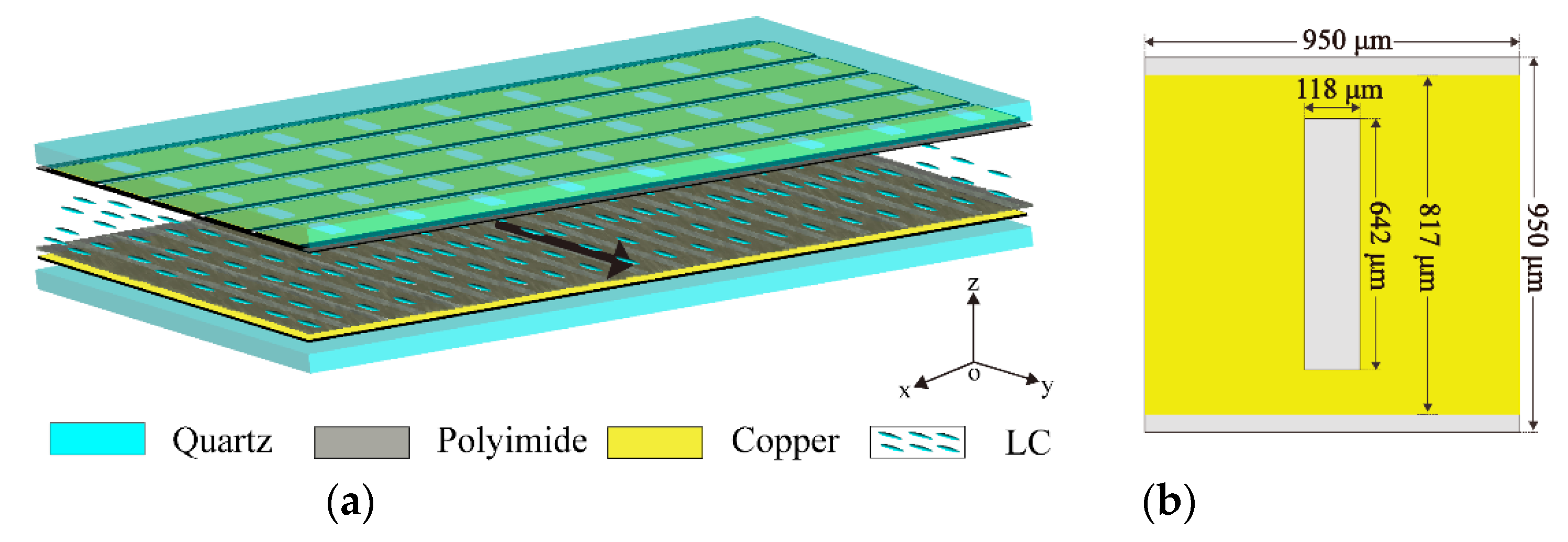
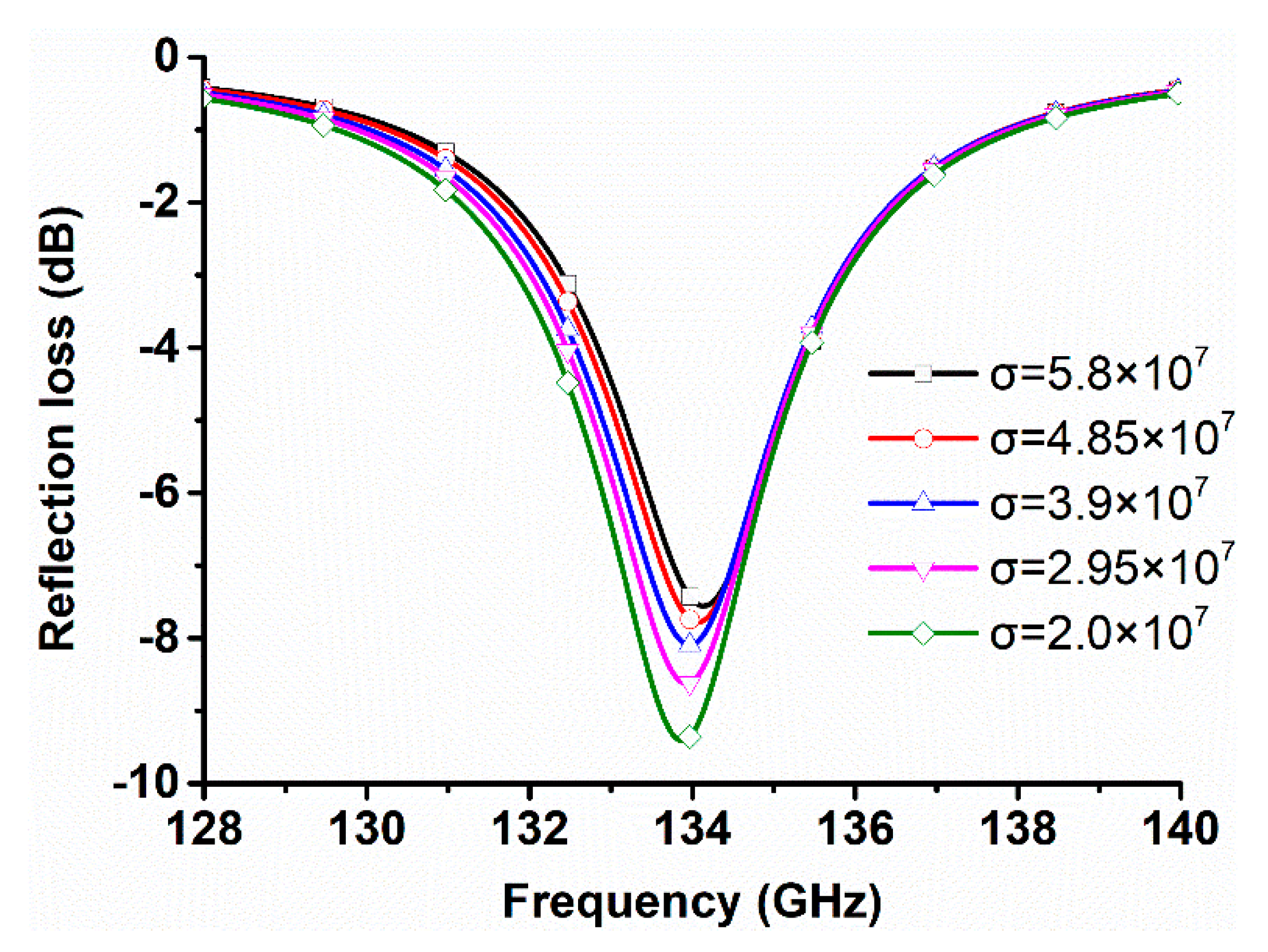
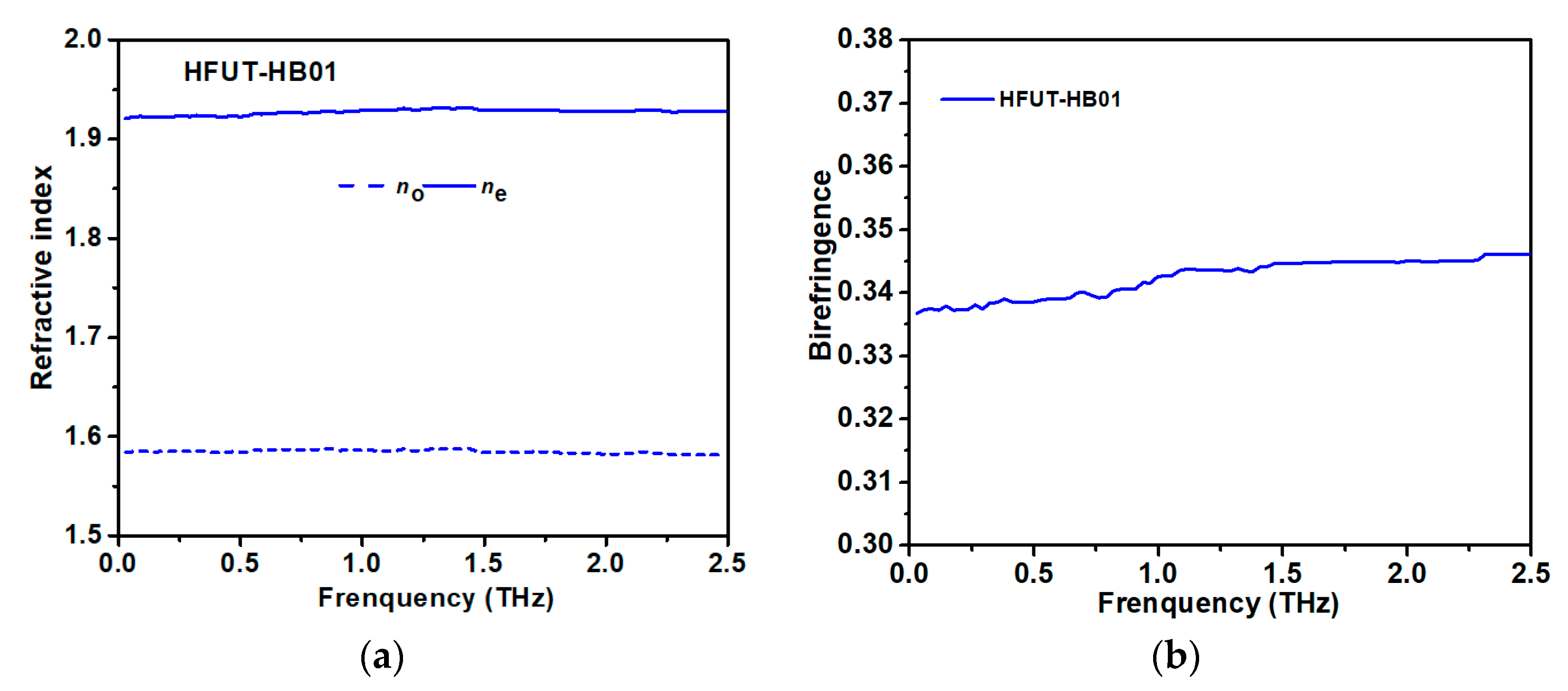


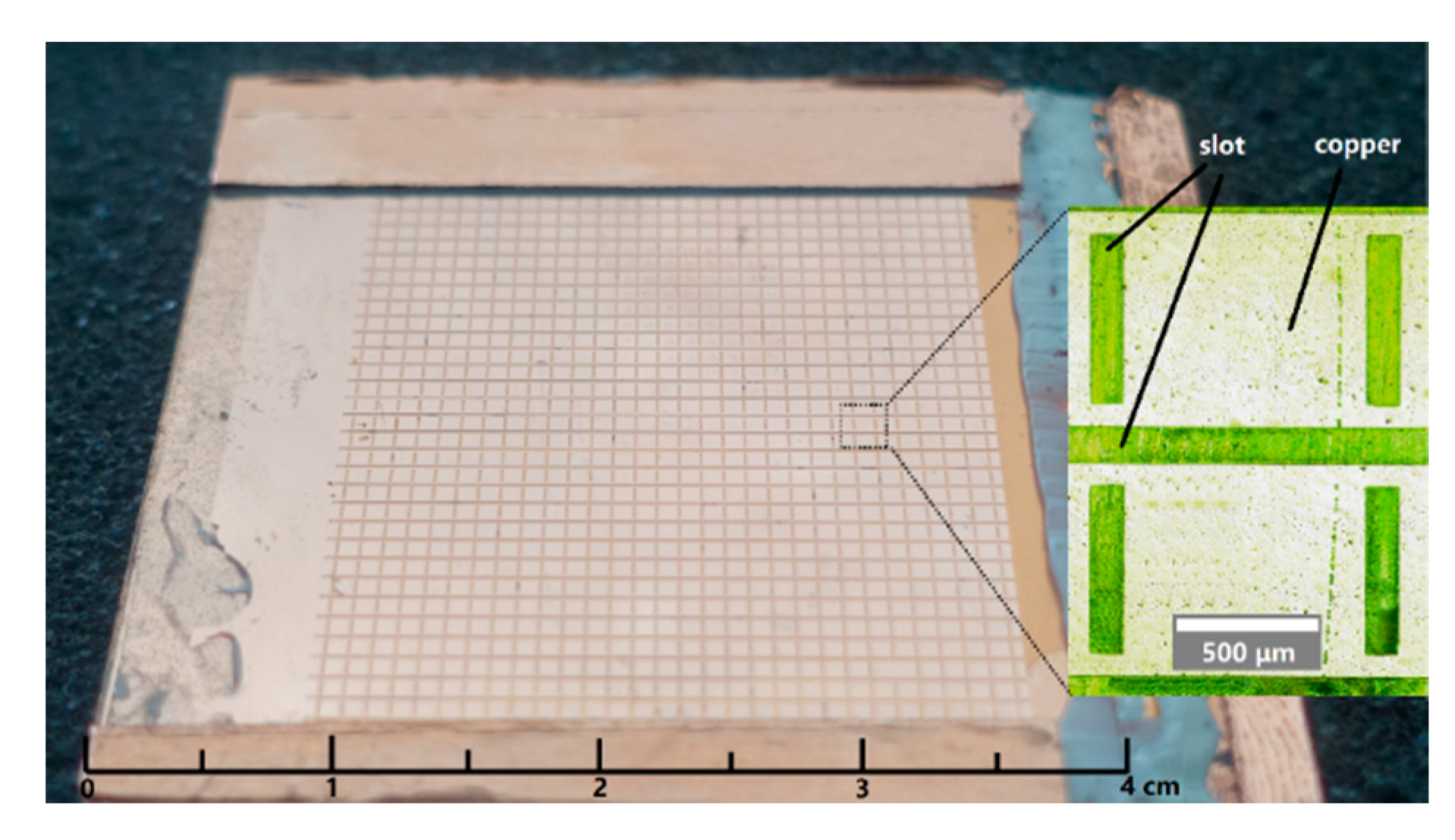
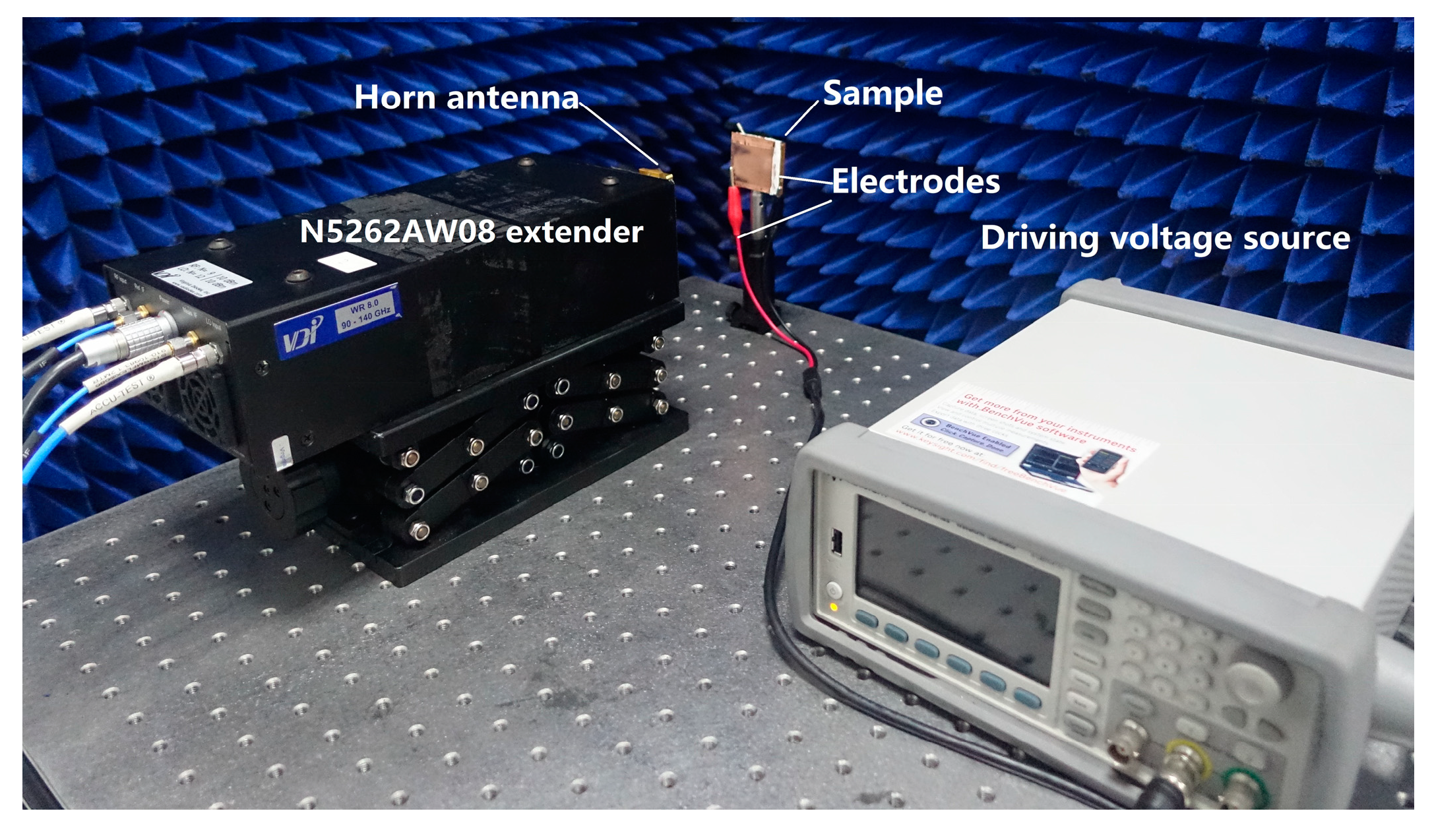
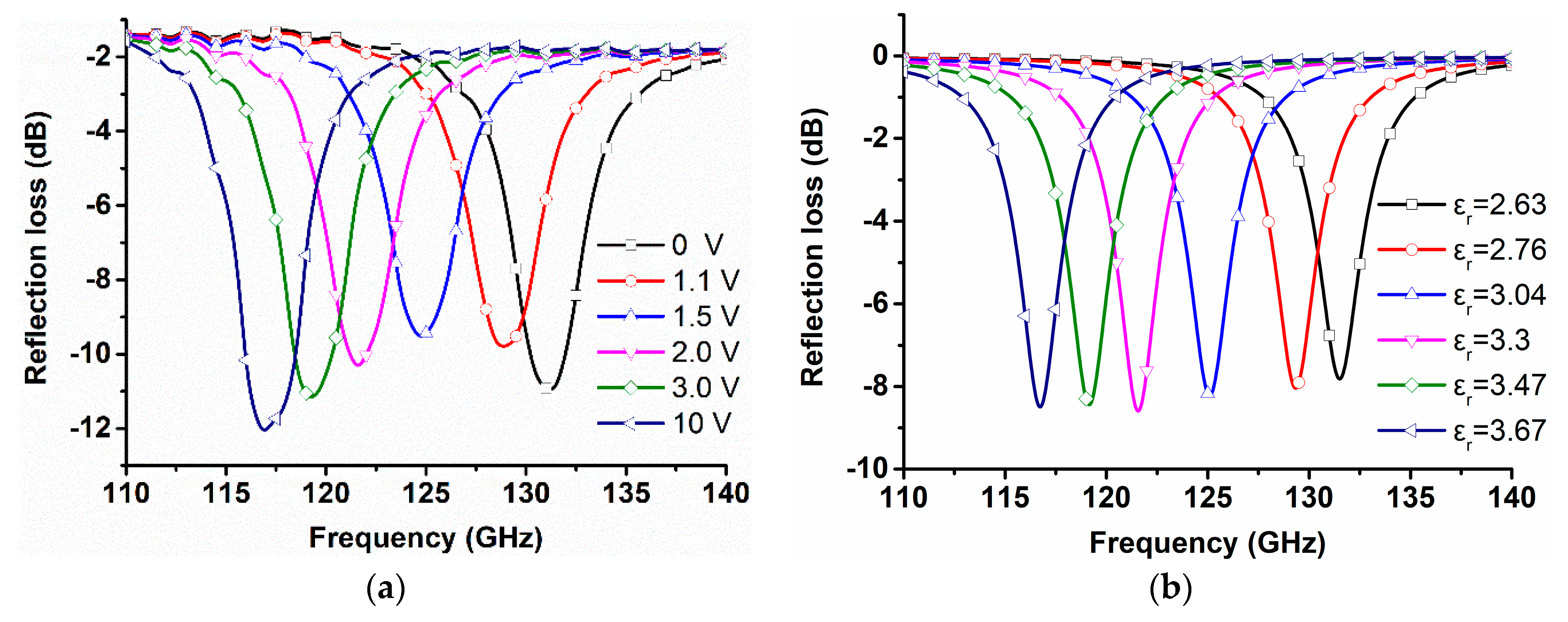
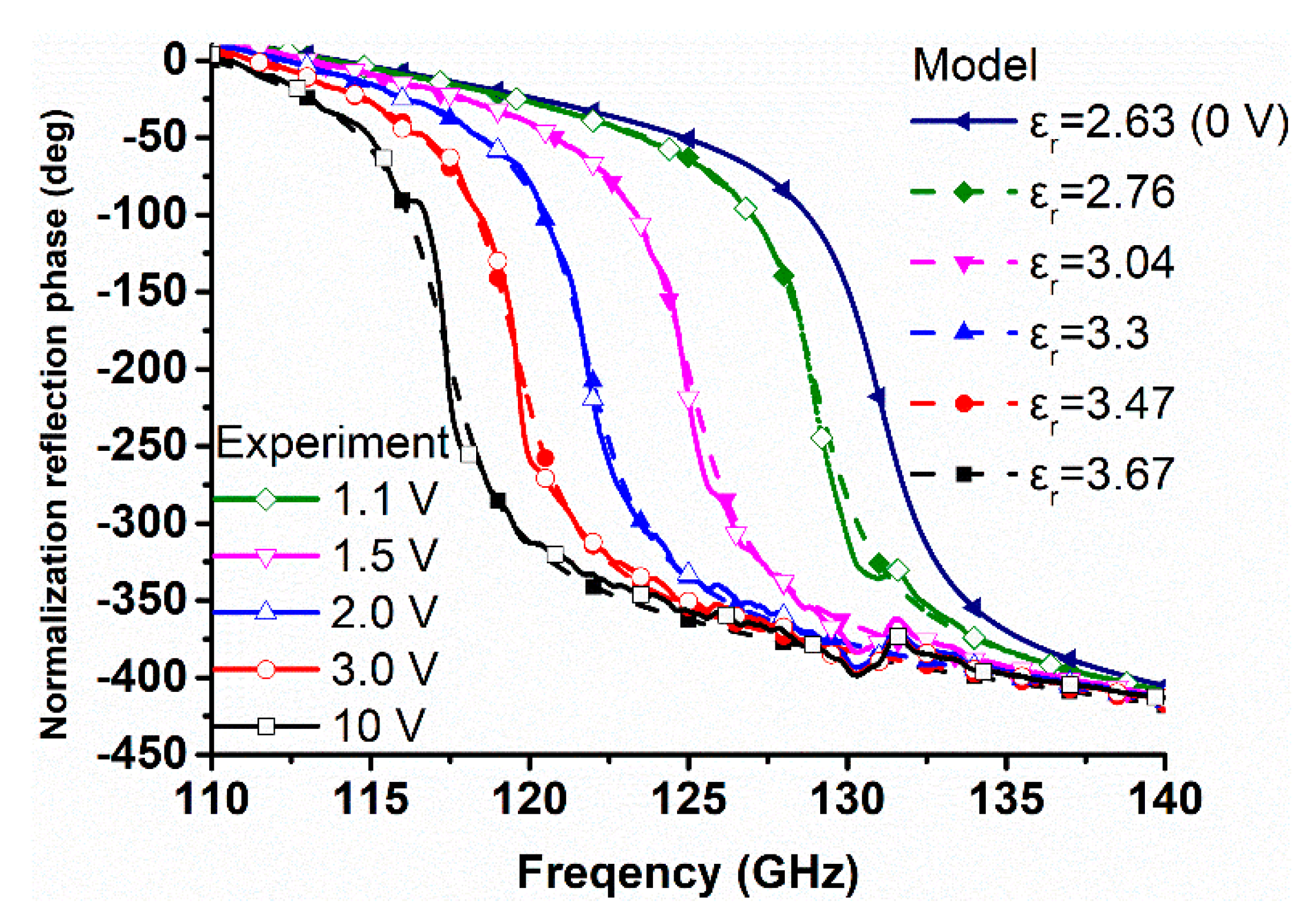
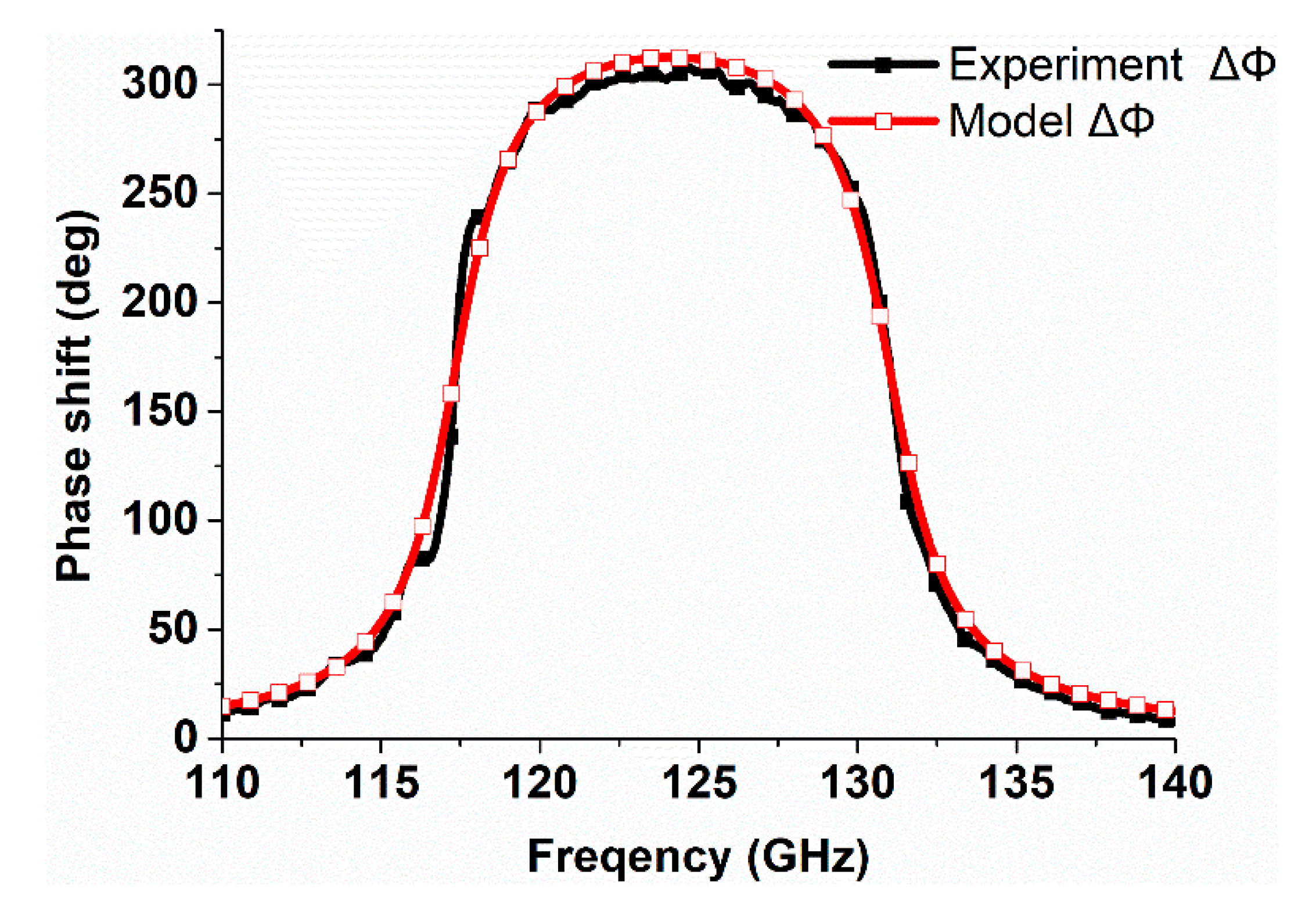
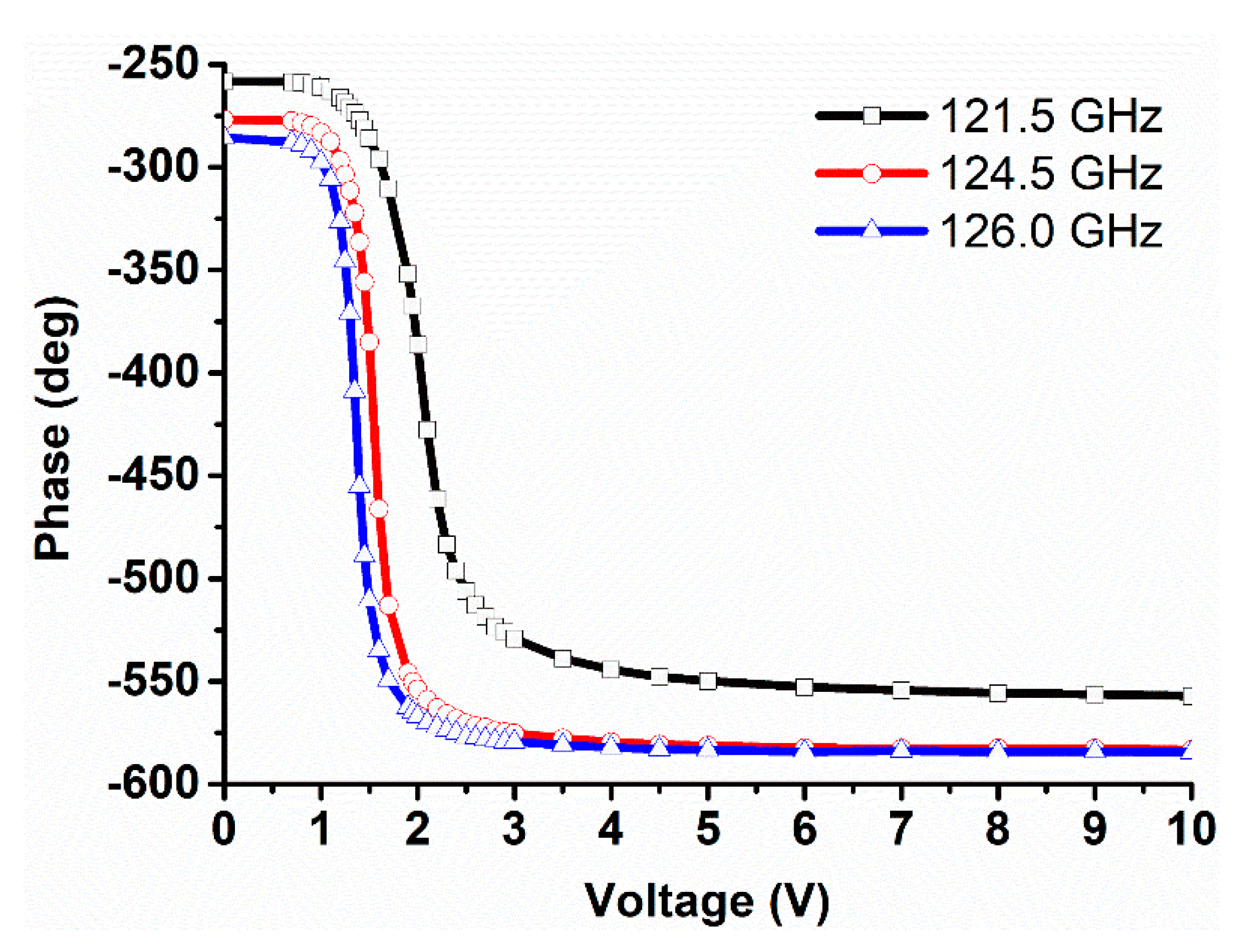
© 2018 by the authors. Licensee MDPI, Basel, Switzerland. This article is an open access article distributed under the terms and conditions of the Creative Commons Attribution (CC BY) license (http://creativecommons.org/licenses/by/4.0/).
Share and Cite
Gao, S.; Yang, J.; Wang, P.; Zheng, A.; Lu, H.; Deng, G.; Lai, W.; Yin, Z. Tunable Liquid Crystal Based Phase Shifter with a Slot Unit Cell for Reconfigurable Reflectarrays in F-Band. Appl. Sci. 2018, 8, 2528. https://doi.org/10.3390/app8122528
Gao S, Yang J, Wang P, Zheng A, Lu H, Deng G, Lai W, Yin Z. Tunable Liquid Crystal Based Phase Shifter with a Slot Unit Cell for Reconfigurable Reflectarrays in F-Band. Applied Sciences. 2018; 8(12):2528. https://doi.org/10.3390/app8122528
Chicago/Turabian StyleGao, Sheng, Jun Yang, Peng Wang, Andong Zheng, Hongbo Lu, Guangsheng Deng, Weien Lai, and Zhiping Yin. 2018. "Tunable Liquid Crystal Based Phase Shifter with a Slot Unit Cell for Reconfigurable Reflectarrays in F-Band" Applied Sciences 8, no. 12: 2528. https://doi.org/10.3390/app8122528
APA StyleGao, S., Yang, J., Wang, P., Zheng, A., Lu, H., Deng, G., Lai, W., & Yin, Z. (2018). Tunable Liquid Crystal Based Phase Shifter with a Slot Unit Cell for Reconfigurable Reflectarrays in F-Band. Applied Sciences, 8(12), 2528. https://doi.org/10.3390/app8122528






